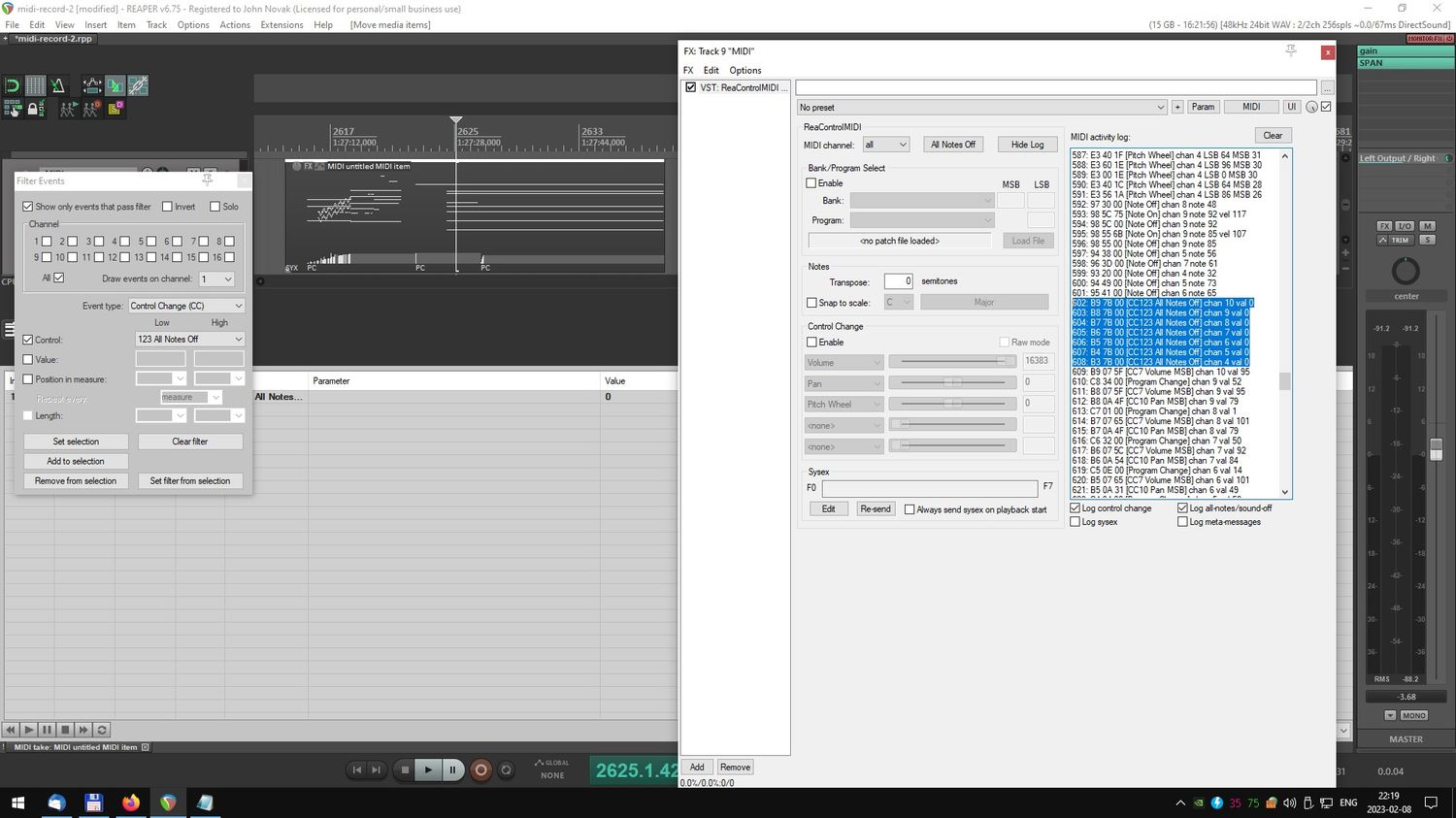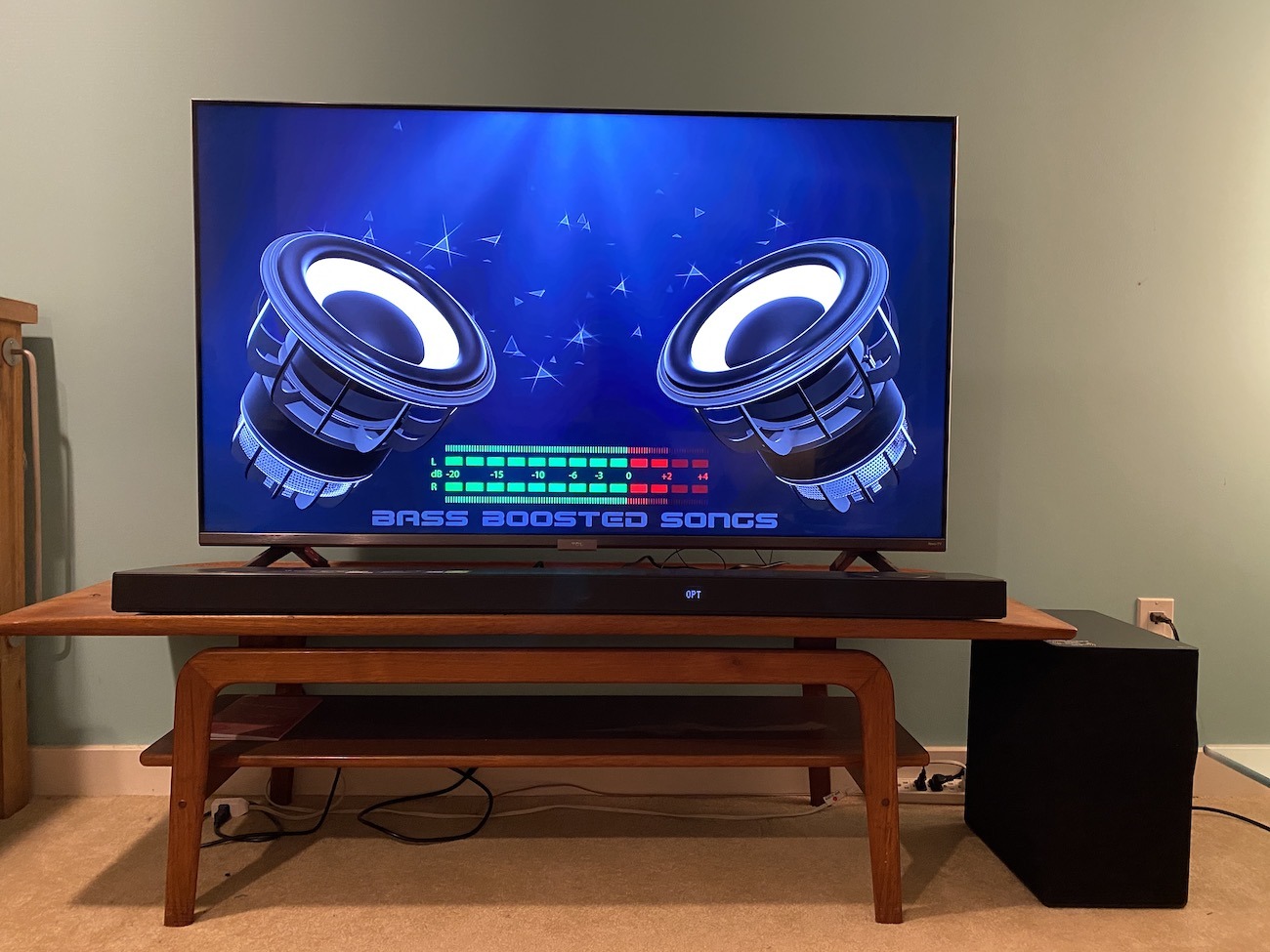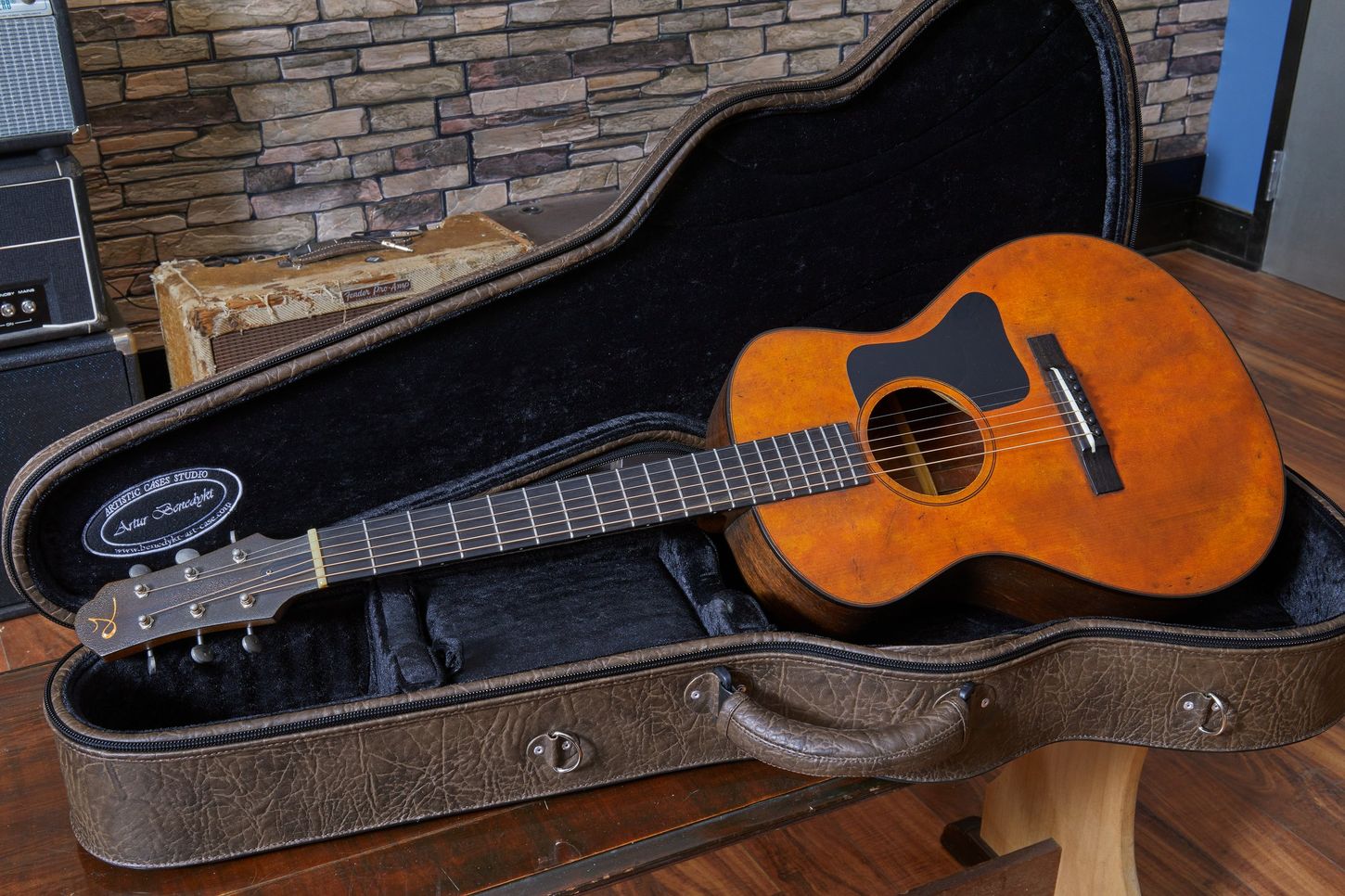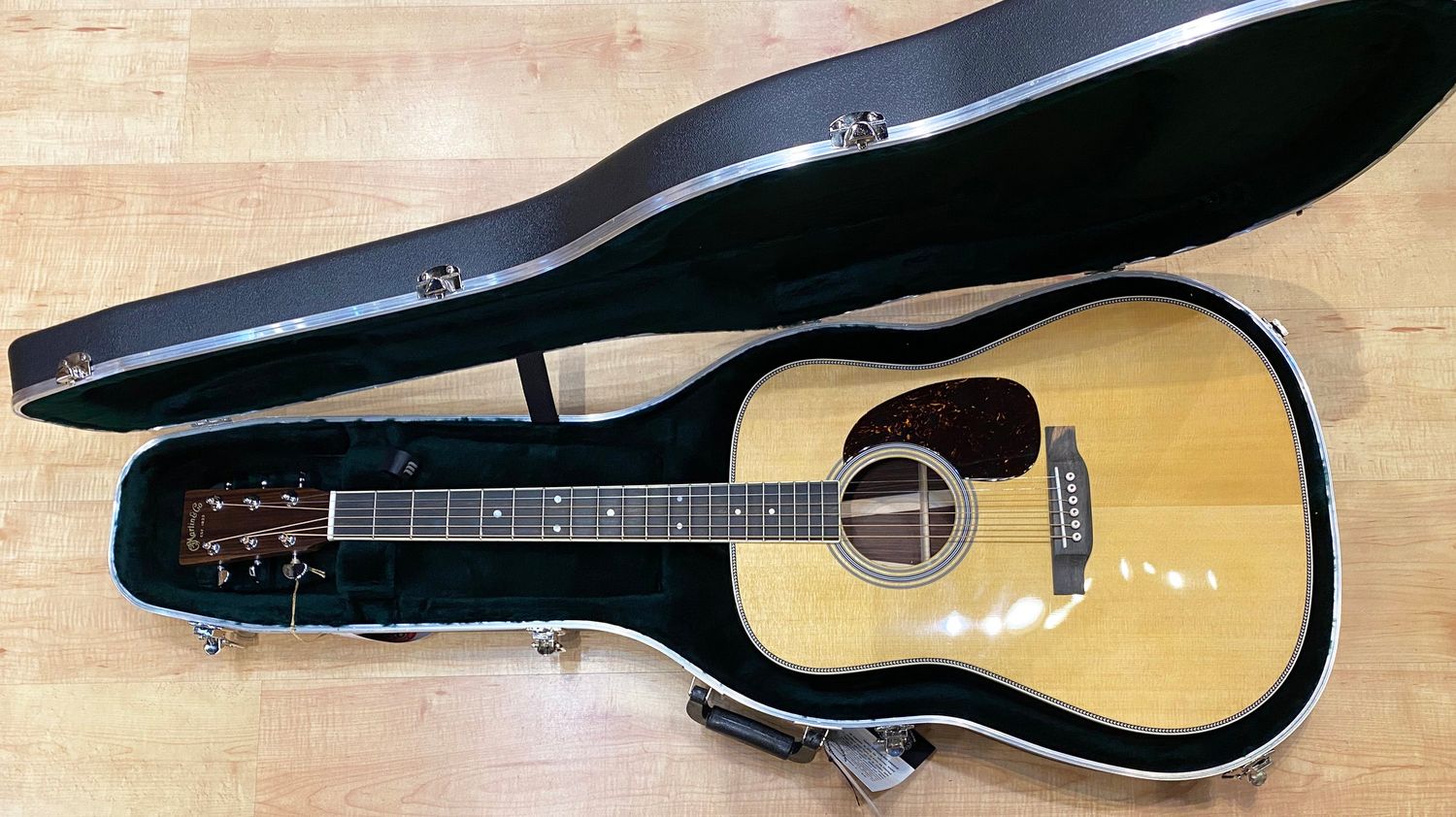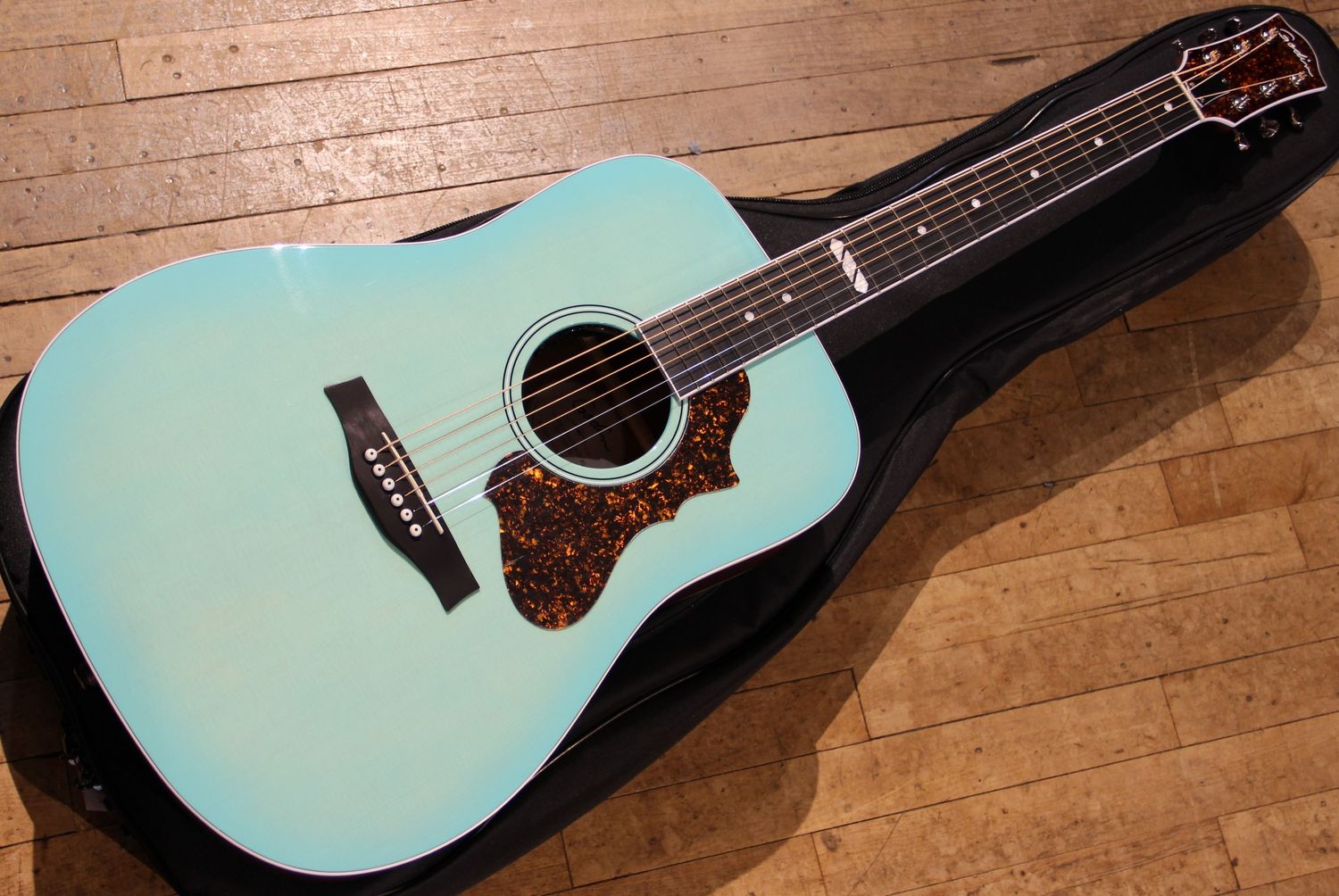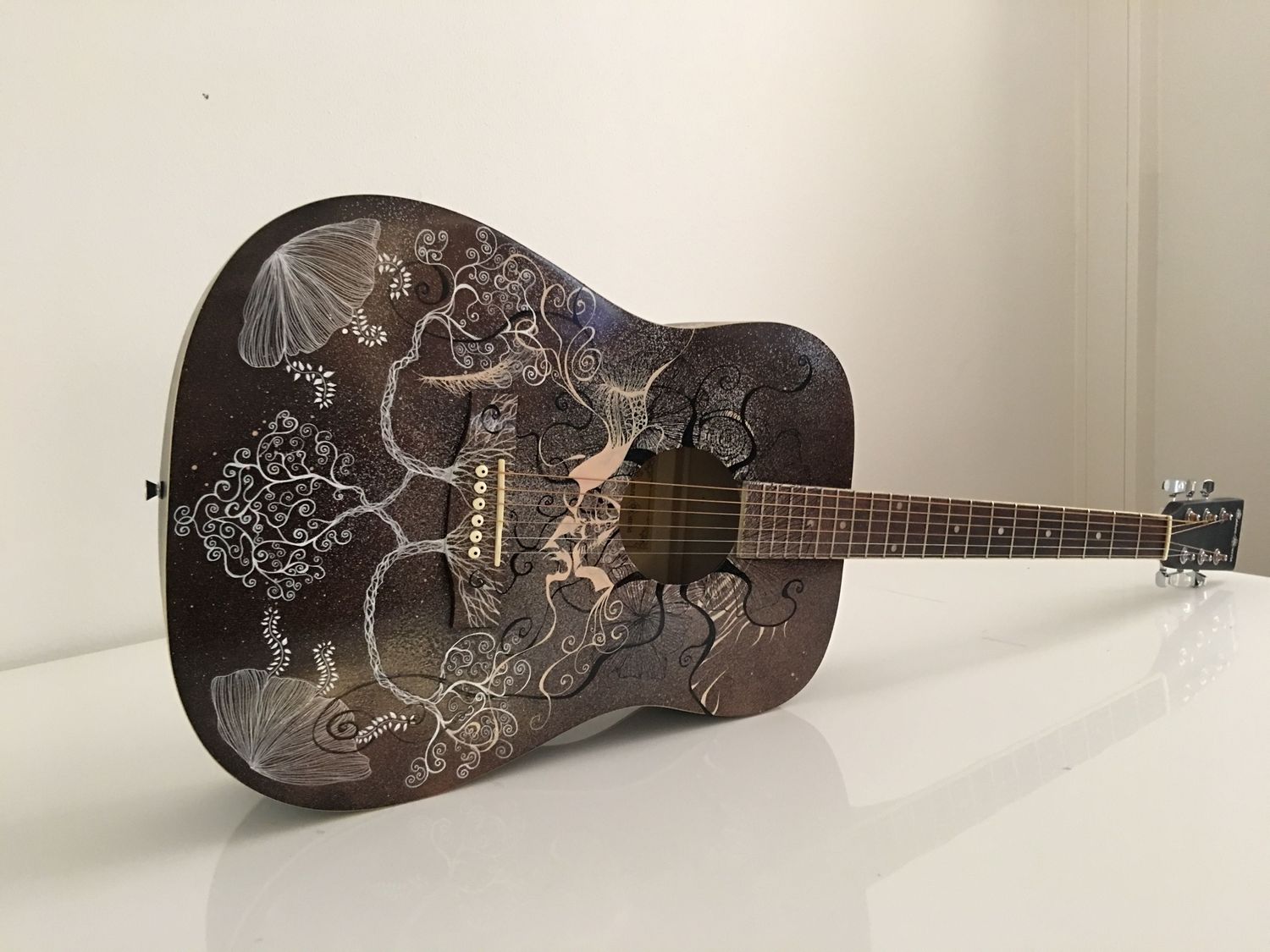Home>Production & Technology>Acoustic>How To Set Up Acoustic Guitar


Acoustic
How To Set Up Acoustic Guitar
Published: March 12, 2024
Learn how to set up your acoustic guitar for optimal playability and sound quality with our step-by-step guide. Discover essential tips and techniques for achieving the perfect setup.
(Many of the links in this article redirect to a specific reviewed product. Your purchase of these products through affiliate links helps to generate commission for AudioLover.com, at no extra cost. Learn more)
Table of Contents
Introduction
Setting up an acoustic guitar is a crucial process that can significantly impact the instrument's playability and sound quality. Whether you're a seasoned musician or a beginner, understanding the steps involved in setting up an acoustic guitar is essential for achieving optimal performance and ensuring an enjoyable playing experience.
A well-set-up acoustic guitar not only feels comfortable to play but also produces a rich, resonant tone that enhances the overall musical performance. By carefully attending to various aspects of the guitar's setup, such as string tension, action, and intonation, you can customize the instrument to suit your playing style and preferences.
In this comprehensive guide, we will walk through the essential steps required to set up an acoustic guitar, covering everything from selecting the right guitar to fine-tuning its components. Whether you're preparing a new guitar for its first play or rejuvenating an older instrument, the following steps will help you achieve an optimal setup that brings out the best in your acoustic guitar.
From choosing the right guitar to adjusting the truss rod and addressing potential buzzing issues, each step plays a crucial role in ensuring that your acoustic guitar performs at its best. By following this guide, you'll gain valuable insights into the intricate process of setting up an acoustic guitar, empowering you to maintain and optimize your instrument for years to come.
Now, let's embark on this journey to unlock the full potential of your acoustic guitar by mastering the art of setting it up for superior playability and exceptional sound quality. Whether you're a dedicated musician, a passionate hobbyist, or someone exploring the world of acoustic guitars, this guide will equip you with the knowledge and skills needed to set up your instrument with confidence and precision.
Step 1: Choose the Right Guitar
Selecting the right acoustic guitar is the foundational step in the setup process, as it sets the stage for the instrument's overall playability and tonal characteristics. When choosing an acoustic guitar, several factors should be considered to ensure that it aligns with your musical preferences and playing style.
Consider the Body Style
Acoustic guitars come in various body styles, each offering distinct tonal qualities and ergonomic features. The most common body styles include dreadnought, concert, auditorium, and parlor. The dreadnought, known for its bold and robust sound, is favored by many for its versatility across different musical genres. On the other hand, the concert and auditorium styles offer a balanced tonal output and comfortable playing experience, making them suitable for a wide range of players. The parlor style, with its compact size and vintage charm, appeals to those seeking a more intimate and nuanced sound. By considering the body style that best suits your musical preferences and physical comfort, you can narrow down your options and make an informed choice.
Assess Tonewoods
The selection of tonewoods significantly influences the acoustic properties of the guitar. Common tonewoods such as spruce, cedar, mahogany, and rosewood impart distinct tonal characteristics, from bright and articulate to warm and resonant. Understanding the sonic attributes of different tonewoods can guide you in choosing a guitar that produces the desired sound. Additionally, considering the construction and quality of the tonewoods used in the guitar's top, back, and sides is essential for ensuring durability and long-term tonal stability.
Playability and Comfort
When trying out potential guitars, pay attention to the instrument's playability and comfort. Assess the neck profile, fretboard width, and overall feel of the guitar to determine if it complements your playing style. A comfortable and responsive neck facilitates smooth chord transitions and effortless soloing, contributing to an enjoyable playing experience. Furthermore, consider the action (string height) and string gauge, as these factors can be adjusted during the setup process to tailor the guitar's playability to your preferences.
Test and Compare
Before making a final decision, take the time to test and compare different acoustic guitars. Play various chords, scales, and melodies to evaluate the instrument's tonal response, sustain, and resonance. Pay attention to the guitar's dynamic range and responsiveness across different playing techniques. By testing multiple guitars, you can discern subtle nuances in tone and feel, ultimately guiding you toward the guitar that resonates with your musical sensibilities.
By carefully considering the body style, tonewoods, playability, and conducting thorough comparisons, you can confidently choose an acoustic guitar that serves as the perfect canvas for the subsequent setup steps. The right guitar will inspire and empower you to unlock your musical potential, making the setup process a rewarding journey toward achieving your desired sound and playability.
Step 2: Restring the Guitar
Restringing an acoustic guitar is a fundamental aspect of its maintenance and setup, directly influencing its playability and tonal characteristics. Over time, guitar strings can lose their brightness, elasticity, and intonation stability, necessitating regular restringing to ensure optimal performance. Whether you're preparing a new guitar for its initial setup or revitalizing an existing instrument, the restringing process is a pivotal step in achieving a fresh, vibrant sound and responsive feel.
Selecting the Right Strings
When embarking on the restringing process, it's essential to select the appropriate strings for your acoustic guitar. Guitar strings come in various materials, gauges, and coatings, each contributing to the instrument's tonal profile and longevity. Phosphor bronze and 80/20 bronze are popular choices, offering distinct tonal characteristics ranging from warm and balanced to bright and articulate. Additionally, considering the string gauge is crucial, as lighter gauges facilitate easier bending and fingerpicking, while heavier gauges provide enhanced projection and sustain. Coated strings, designed to resist corrosion and prolong their lifespan, are ideal for players seeking long-lasting tone and durability.
Removing the Old Strings
Before installing new strings, it's necessary to remove the existing ones carefully. Begin by loosening the tuning pegs to reduce tension on the strings, then unwind and remove each string from the bridge and tuning pegs. Pay attention to the bridge pins, ensuring they are gently removed to prevent damage to the guitar's bridge. Once the old strings are removed, take the opportunity to clean the fretboard and guitar body, removing any accumulated dirt and residue to maintain the instrument's overall condition.
Installing the New Strings
With the guitar now free of its old strings, it's time to install the new ones. Starting with the thickest string (low E), insert one end into the bridge and secure it with the corresponding bridge pin. Moving to the headstock, insert the opposite end of the string through the appropriate tuning peg, leaving a few inches of slack. Begin winding the string onto the tuning peg, ensuring it wraps neatly and securely for optimal tuning stability. Repeat this process for the remaining strings, following the correct order and maintaining consistent winding direction for each string.
Stretching and Tuning
After installing the new strings, it's crucial to stretch them to minimize tuning instability and ensure they settle properly. Gently pull and stretch each string along its length, allowing it to adjust to the tension and reducing the likelihood of future tuning issues. Once the strings are stretched, proceed to tune the guitar to the desired pitch using a reliable tuner. Fine-tune the strings' tension, ensuring they are in harmony with each other and producing a balanced, cohesive sound across the fretboard.
Final Adjustments
Upon restringing and tuning the guitar, it's advisable to perform a final inspection and make any necessary adjustments. Check the string action (height above the fretboard) to ensure it aligns with your playing preferences, making adjustments to the bridge saddle if needed. Additionally, assess the overall intonation by comparing the open string pitches with their respective fretted notes, making saddle adjustments as required to achieve accurate intonation across the fretboard.
By meticulously restringing the acoustic guitar and attending to the finer details of string selection, installation, stretching, and tuning, you can breathe new life into the instrument, elevating its playability and tonal expressiveness. The restringing process not only rejuvenates the guitar's sonic potential but also sets the stage for subsequent setup adjustments, paving the way for an enhanced playing experience and musical inspiration.
Step 3: Adjust the Action
Adjusting the action of an acoustic guitar is a critical step in the setup process, directly impacting the instrument's playability and comfort. The action refers to the height of the strings above the fretboard, influencing the ease of fretting notes and executing various playing techniques. By fine-tuning the action, players can tailor the guitar's responsiveness to their preferences, striking a balance between comfortable fretting and optimal string resonance.
Assessing the Action
Before making any adjustments, it's essential to assess the current action of the acoustic guitar. Using a feeler gauge or specialized action gauge, measure the distance between the strings and the top of the 12th fret. This measurement serves as a baseline for evaluating the guitar's action, providing insights into the string height and potential areas for adjustment. Additionally, assess the action across the entire fretboard, noting any inconsistencies or excessively high/low spots that may affect playability.
Making Adjustments
To lower or raise the action, adjustments can be made at the guitar's saddle and nut. The saddle, located on the bridge, plays a crucial role in determining the action's height and overall string tension. By carefully removing the saddle and sanding its bottom surface, incremental changes can be made to lower the action. Conversely, if a higher action is desired, shimming the saddle with a thin piece of material can achieve the necessary elevation.
Similarly, the nut, situated at the top of the fretboard, can be adjusted to refine the action at the lower fret positions. Carefully filing the nut slots to the appropriate depth can optimize the string height at the first fret, ensuring smooth and consistent playability across the fretboard. It's important to approach these adjustments with precision and patience, as incremental changes can yield significant improvements in the guitar's feel and responsiveness.
Testing and Refinement
After making initial adjustments to the saddle and nut, it's crucial to test the guitar's playability and assess the impact of the action changes. Play various chords, scales, and single-note passages across different fret positions, evaluating the guitar's responsiveness and fretting ease. Pay attention to any buzzing or fretting out, as these indicators can guide further refinements to achieve an optimal action setup.
Achieving Balance
The goal of action adjustment is to strike a balance between comfortable fretting and optimal string resonance. By fine-tuning the action to suit your playing style and physical comfort, you can enhance the guitar's playability and facilitate effortless execution of musical ideas. A well-adjusted action empowers players to explore the instrument's sonic capabilities with confidence, fostering a deeper connection between the musician and their acoustic guitar.
By meticulously adjusting the action of the acoustic guitar, players can customize the instrument to their preferences, elevating its playability and responsiveness. This step in the setup process sets the stage for a more enjoyable and expressive playing experience, allowing musicians to unlock the full potential of their acoustic guitar.
Step 4: Tune the Guitar
Tuning an acoustic guitar is a fundamental aspect of the setup process, ensuring that the instrument produces accurate and harmonious pitches across its six strings. Achieving proper tuning not only facilitates enjoyable playing experiences but also contributes to the overall tonal clarity and musical expression of the guitar.
Importance of Accurate Tuning
Accurate tuning is essential for maintaining the integrity of musical compositions and enabling seamless collaboration with other musicians. By ensuring that each string is tuned to the correct pitch, players can create harmonious chord progressions, melodious arpeggios, and captivating melodies that resonate with listeners. Furthermore, precise tuning is crucial for developing a keen ear for pitch and intonation, nurturing a musician's sense of musical accuracy and tonal awareness.
Utilizing a Reliable Tuner
To tune an acoustic guitar effectively, it's advisable to utilize a reliable electronic tuner. Electronic tuners provide visual and auditory feedback, guiding players in adjusting the tension of each string to achieve the desired pitch. Whether using a clip-on tuner, pedal tuner, or smartphone app, the convenience and accuracy of electronic tuners streamline the tuning process, allowing players to fine-tune their instruments with confidence and precision.
Standard Tuning and Alternative Tunings
Standard tuning, where the strings are tuned to E-A-D-G-B-E from low to high, serves as the foundational tuning for many acoustic guitar compositions. However, exploring alternative tunings, such as drop D, open G, or DADGAD, can expand the guitar's sonic possibilities and inspire creative exploration. By experimenting with alternative tunings, players can discover unique chord voicings, resonant drone notes, and evocative harmonies, adding depth and diversity to their musical repertoire.
Tuning by Ear
While electronic tuners offer convenience and accuracy, developing the ability to tune the guitar by ear is a valuable skill that enhances a musician's musical independence and adaptability. Tuning by ear involves referencing the pitches of the strings to a reliable source, such as a piano, pitch pipe, or another tuned instrument. This method cultivates a deeper understanding of pitch relationships and fosters a strong sense of musical self-sufficiency.
Fine-Tuning and Double-Checking
After initially tuning the guitar, it's important to perform a final check and make any necessary adjustments to ensure the strings are in perfect harmony with each other. Double-checking the tuning across different positions on the fretboard helps identify any subtle discrepancies that may affect the guitar's overall intonation and tonal balance. By fine-tuning the strings and confirming their pitch accuracy, players can embark on their musical journey with confidence, knowing that their acoustic guitar is primed for expressive and resonant performances.
Tuning the acoustic guitar is a foundational step that sets the stage for musical exploration and creative expression. By embracing the art of tuning and cultivating a keen ear for pitch, players can unlock the full sonic potential of their acoustic guitar, paving the way for captivating musical experiences and artistic fulfillment.
Step 5: Set the Intonation
Setting the intonation of an acoustic guitar is a crucial step in the setup process, ensuring that the instrument produces accurate pitches and maintains tonal consistency across the fretboard. Intonation refers to the guitar's ability to play in tune at various positions along the neck, allowing chords and individual notes to resonate with clarity and precision. By addressing the intonation, players can enhance the guitar's overall tonal balance and ensure that musical passages sound harmonious and in tune, regardless of the fretted position.
Understanding Intonation
Intonation issues often manifest as discrepancies between the open string pitches and their corresponding fretted notes. When the intonation is off, fretted notes may sound sharp or flat compared to their open string counterparts, leading to a lack of tonal cohesion and musical accuracy. This phenomenon becomes more apparent as players venture into higher fret positions, highlighting the importance of precise intonation for maintaining tonal integrity across the entire fretboard.
Adjusting the Saddle Position
The primary method for setting the intonation involves adjusting the saddle position for each string. By carefully moving the saddle forward or backward, the string's effective length can be modified, aligning the fretted notes with their respective open string pitches. Utilizing a reliable electronic tuner, players can compare the open string pitch to the 12th fret harmonic and the fretted 12th fret note, making incremental saddle adjustments until the pitches are perfectly aligned.
Fine-Tuning for Accuracy
After making initial saddle adjustments, it's essential to fine-tune the intonation by testing various fretted notes across the fretboard. Paying close attention to chords, scales, and melodies, players can assess the guitar's tonal consistency and identify any lingering intonation issues. By refining the saddle positions and confirming the alignment of fretted notes with their open string counterparts, players can achieve precise intonation that enhances the guitar's tonal clarity and musical expressiveness.
Verifying Across the Fretboard
To ensure comprehensive intonation accuracy, it's advisable to verify the intonation across different fret positions, particularly in the higher register of the fretboard. By playing passages and melodic phrases in various positions, players can confirm that the guitar maintains consistent pitch accuracy and tonal resonance, allowing for seamless musical expression and harmonic richness.
By meticulously setting the intonation of the acoustic guitar, players can elevate the instrument's tonal integrity and ensure that musical passages resonate with clarity and precision across the entire fretboard. This step in the setup process lays the foundation for expressive and harmonious performances, empowering players to explore the guitar's sonic capabilities with confidence and musical finesse.
Step 6: Adjust the Truss Rod
The truss rod of an acoustic guitar plays a pivotal role in maintaining the instrument's structural integrity and neck relief, influencing its playability and overall stability. As part of the setup process, adjusting the truss rod is a crucial step that allows players to optimize the guitar's neck curvature, ensuring a comfortable playing feel and mitigating potential issues such as fret buzz and string action inconsistencies.
Understanding the Truss Rod
The truss rod is a metal rod embedded within the neck of the acoustic guitar, running along its length beneath the fretboard. It serves to counteract the tension exerted by the strings, contributing to the neck's resistance to bending and warping. By adjusting the truss rod, players can modify the neck's curvature, addressing factors such as forward bow (concave curvature) or back bow (convex curvature) to achieve an optimal balance of string clearance and neck stability.
Assessing Neck Relief
Before making any truss rod adjustments, it's essential to assess the guitar's neck relief, which refers to the slight curvature of the neck that accommodates the string tension and facilitates comfortable fretting. Using a straightedge or specialized neck relief gauge, players can measure the gap between the straightedge and the fret tops at the middle fret positions, gauging the degree of neck curvature. This assessment provides valuable insights into the current state of the neck relief, guiding subsequent truss rod adjustments.
Making Truss Rod Adjustments
To adjust the truss rod, players typically utilize a specialized hex key or wrench that fits the truss rod nut located at the headstock or inside the soundhole of the guitar. By carefully turning the truss rod nut in small increments, players can introduce subtle changes to the neck curvature, aiming to achieve a balanced and responsive feel across the fretboard. It's crucial to approach truss rod adjustments with patience and caution, making gradual changes and allowing the neck to adapt to each adjustment before further refinement.
Testing and Refinement
After making initial truss rod adjustments, it's important to test the guitar's playability and assess the impact of the changes. Playing chords, scales, and single-note passages across different fret positions allows players to evaluate the neck's responsiveness and fretting ease. By listening for any buzzing, noting the string action, and gauging the overall feel of the neck, players can refine the truss rod adjustments to achieve an optimal balance of string clearance and neck relief.
Achieving Neck Stability
The goal of adjusting the truss rod is to achieve a stable and responsive neck curvature that complements the player's playing style and preferences. By fine-tuning the truss rod, players can mitigate potential issues such as fret buzz and string action inconsistencies, fostering a comfortable and enjoyable playing experience. A well-adjusted truss rod contributes to the overall stability and playability of the acoustic guitar, empowering players to explore its sonic capabilities with confidence and musical finesse.
In summary, adjusting the truss rod is a vital step in the setup process, allowing players to optimize the neck relief and ensure a stable and comfortable playing feel. By understanding the role of the truss rod, making precise adjustments, and testing the guitar's playability, players can achieve an optimal balance of string clearance and neck stability, enhancing the instrument's overall performance and responsiveness.
Step 7: Check for Buzzing
After completing the essential setup adjustments, it's crucial to meticulously check for buzzing, as it can significantly impact the playability and tonal clarity of the acoustic guitar. Buzzing, characterized by unwanted rattling or buzzing sounds when playing the strings, often indicates issues such as inadequate string clearance, uneven frets, or structural irregularities. By addressing buzzing effectively, players can ensure that the guitar produces clean and articulate tones, fostering a seamless and enjoyable playing experience.
Assessing String Clearance
The first step in checking for buzzing involves assessing the string clearance across the fretboard. By playing each string individually and consecutively fretting each note along the entire length of the neck, players can identify any instances of buzzing caused by insufficient string clearance. Paying close attention to the fretted notes and listening for any unwanted rattling or muted tones provides valuable insights into the presence of buzzing and its potential causes.
Identifying Fret Irregularities
In addition to evaluating string clearance, it's essential to inspect the frets for any irregularities that may contribute to buzzing. Using a fret rocker or straightedge, players can systematically check the frets for unevenness and inconsistencies. Fret irregularities, such as high or uneven frets, can lead to buzzing when the strings make contact with the frets, compromising the guitar's tonal integrity and playability. Identifying and addressing fret irregularities is crucial for mitigating buzzing issues and ensuring that the guitar produces clear and resonant tones across the fretboard.
Addressing Structural Anomalies
Structural anomalies within the guitar, such as loose components, inadequate bracing, or improper neck alignment, can also contribute to buzzing. Carefully inspecting the guitar's components, including the bridge, saddle, and neck joint, allows players to identify and rectify any structural irregularities that may affect the instrument's tonal balance and playability. By addressing these anomalies, players can mitigate buzzing and optimize the guitar's structural integrity, fostering a stable and responsive playing experience.
Fine-Tuning for Resonance
Upon identifying potential sources of buzzing, it's crucial to make targeted adjustments to mitigate the issue effectively. Fine-tuning the string action, addressing fret irregularities through fret leveling and dressing, and ensuring structural stability are essential steps in resolving buzzing and optimizing the guitar's tonal resonance. By systematically addressing each potential cause of buzzing, players can elevate the guitar's playability and ensure that it produces clear, articulate tones across the entire fretboard.
By meticulously checking for buzzing and addressing potential causes, players can optimize the acoustic guitar's tonal clarity and playability, fostering a seamless and enjoyable playing experience. This final step in the setup process ensures that the guitar resonates with clarity and precision, empowering players to explore its sonic capabilities with confidence and musical finesse.
Conclusion
In conclusion, the process of setting up an acoustic guitar encompasses a series of meticulous adjustments and fine-tuning measures that collectively elevate the instrument's playability, tonal expressiveness, and overall performance. From selecting the right guitar to addressing buzzing issues, each step in the setup process plays a pivotal role in customizing the instrument to suit the player's preferences and musical aspirations.
By carefully choosing the right guitar based on body style, tonewoods, and playability, players can establish a strong foundation for the subsequent setup steps. The selection process sets the stage for a personalized playing experience, ensuring that the chosen guitar resonates with the player's musical sensibilities and inspires creative exploration.
Restringing the guitar not only rejuvenates its sonic potential but also sets the tone for the setup adjustments that follow. By selecting the appropriate strings, installing them with precision, and fine-tuning their tension, players can breathe new life into the instrument, achieving a fresh, vibrant sound and responsive feel.
Adjusting the action, setting the intonation, and fine-tuning the truss rod are essential steps that empower players to optimize the guitar's playability, tonal balance, and structural stability. By meticulously attending to these aspects, players can achieve a comfortable and responsive playing feel, ensuring that the guitar resonates with clarity and precision across the entire fretboard.
Furthermore, the process of tuning the guitar and checking for buzzing issues ensures that the instrument produces accurate pitches and clear, articulate tones, fostering a seamless and enjoyable playing experience. By addressing potential buzzing causes and fine-tuning the guitar's structural and tonal integrity, players can optimize the instrument for expressive and resonant performances.
In essence, the setup process is a journey of customization and refinement, allowing players to tailor the acoustic guitar to their preferences and musical aspirations. By embracing each step with patience, precision, and a keen ear for tonal nuances, players can unlock the full sonic potential of their acoustic guitar, paving the way for captivating musical experiences and artistic fulfillment.



